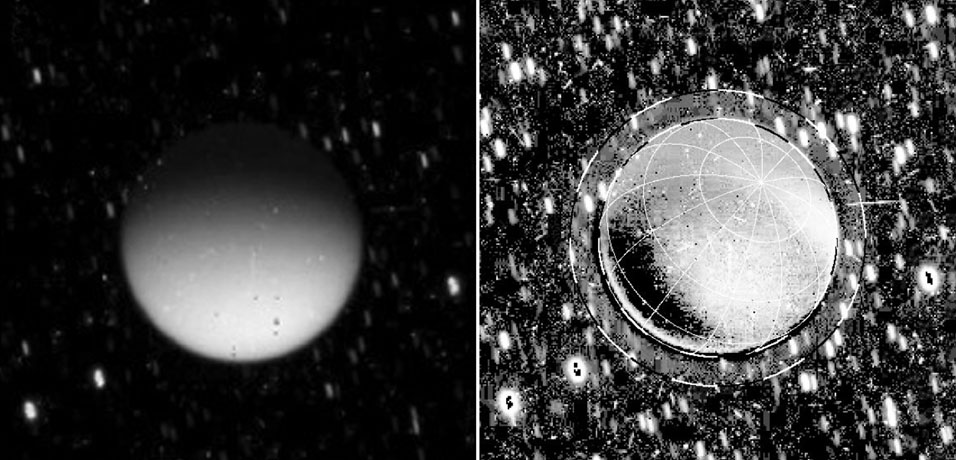 | |
|  |
|
|
| |
| Titan, the glow-in-the-dark moon | Nov 02, 2012 6:05 PM PDT | url |
| | |
Added 1 new A* page:Scientists have found that Saturn's moon Titan glows in the dark:

image by NASA/JPL-Caltech/SSI (source)
| This set of images from NASA's Cassini spacecraft shows Saturn's moon Titan glowing in the dark. Titan was behind Saturn at the time, in eclipse from the sun. The image on the left is a calibrated, but unprocessed image from Cassini's imaging camera. The image on the right was processed to exclude reflected light off Saturn and it is clear that even where Titan did not receive any Saturnshine, it is still emitting light. Some light appears to be emanating from high in the atmosphere (noted by the outer dashed line at about 625 miles or 1,000 kilometers in altitude). But more surprisingly, most of it is diffusing up from lower down in the moon's haze, from about 190 miles (300 kilometers) above the surface. |
The higher-altitude glow, a phenomenon called "airglow" in which "charged particles from the magnetic bubble around Saturn strip electrons off of atmospheric molecules at Titan" was expected; but the light coming up from lower down, although so faint it would be invisible to someone in Titan's atmosphere--it's estimated to be about a millionth of a watt--was unexpected and is, so far, unexplained.
One theory is that it comes from lightning; the planet Venus, for instance, glows with what's called Ashen light from lightning--it was first spotted there in 1643! But while lightning is known to occur on Saturn, it's never been seen on Titan, so the possibility exists that this moon's very faint light is due to something else entirely.
|
·····
|
|
|
